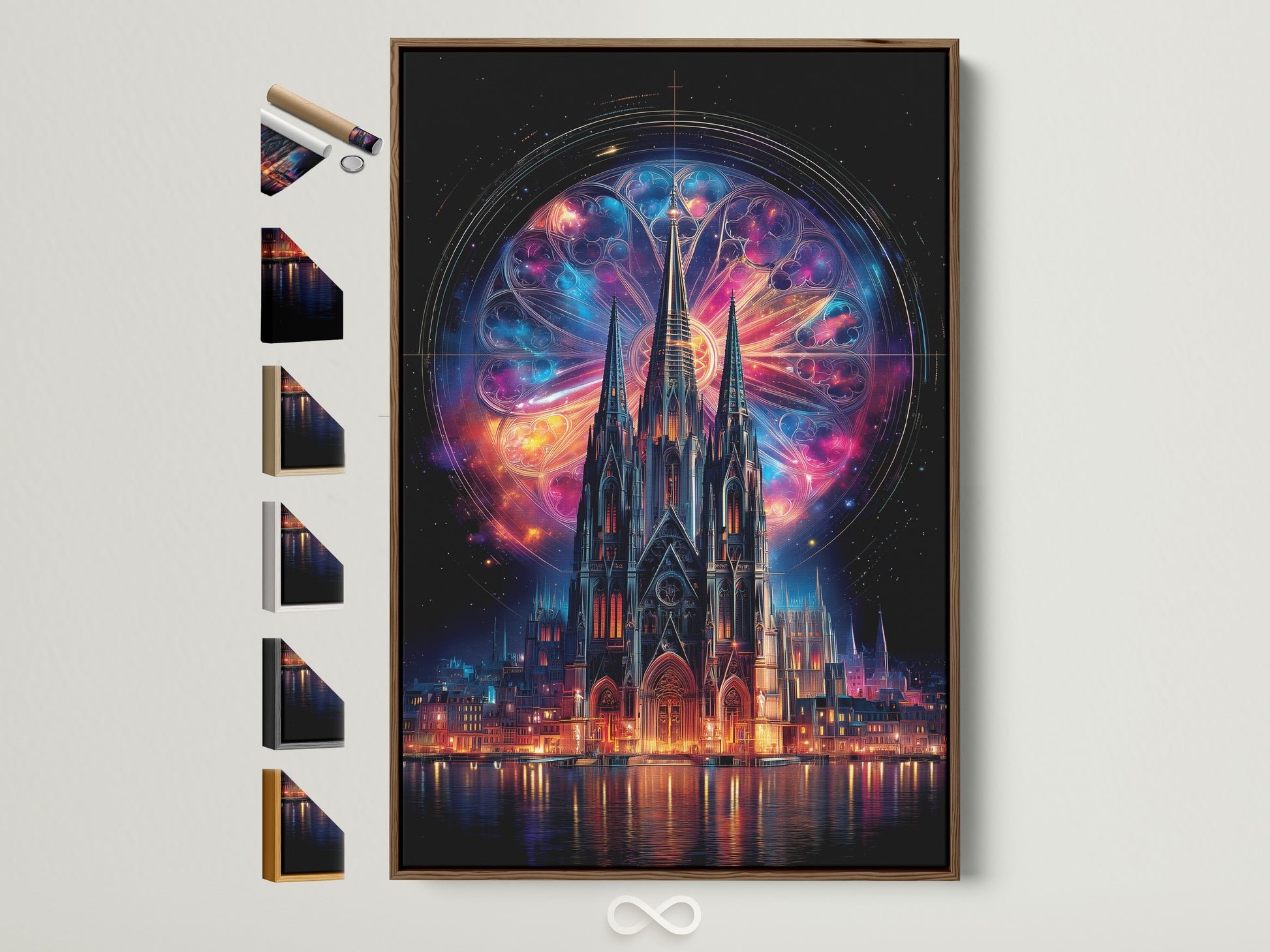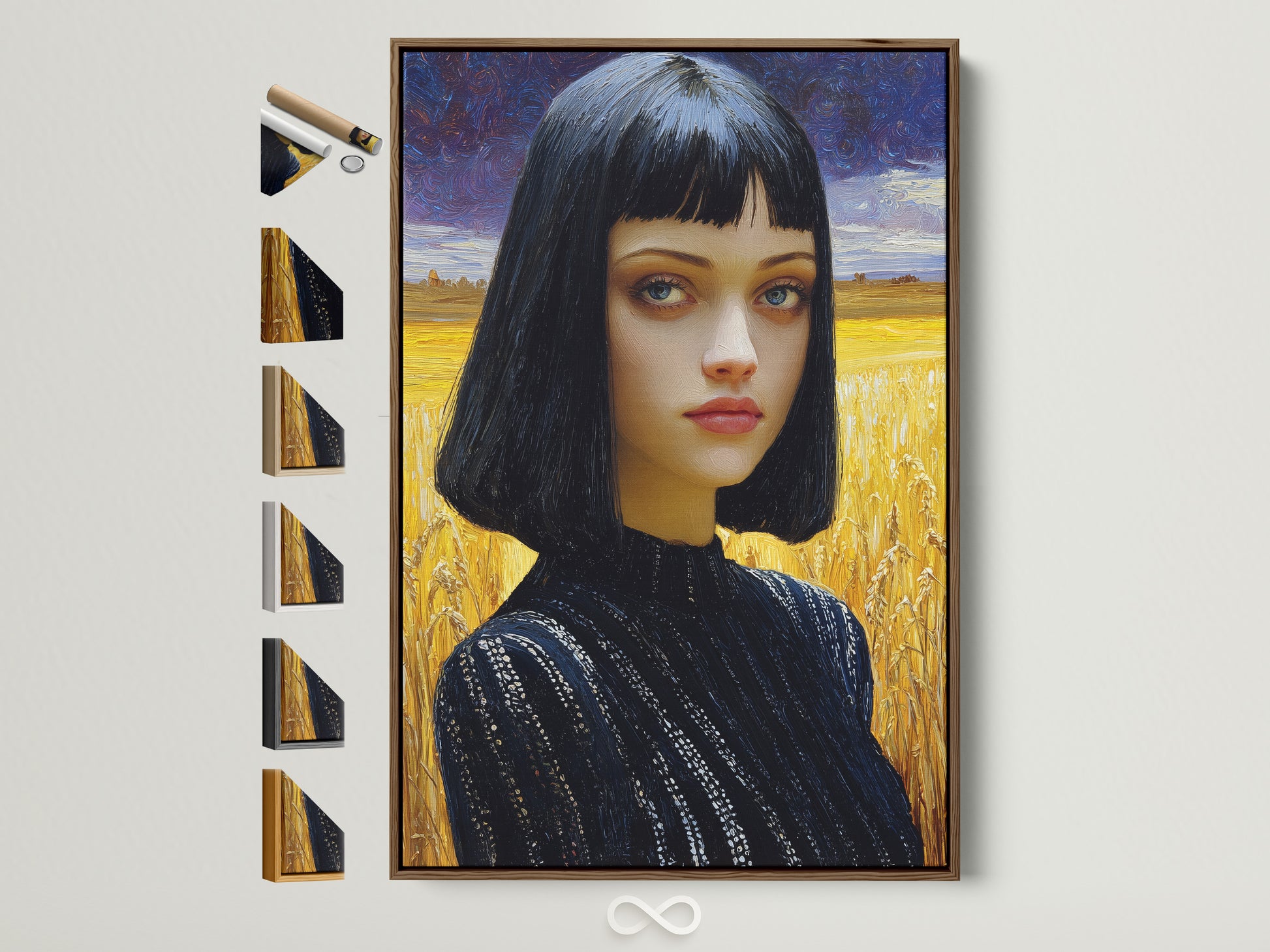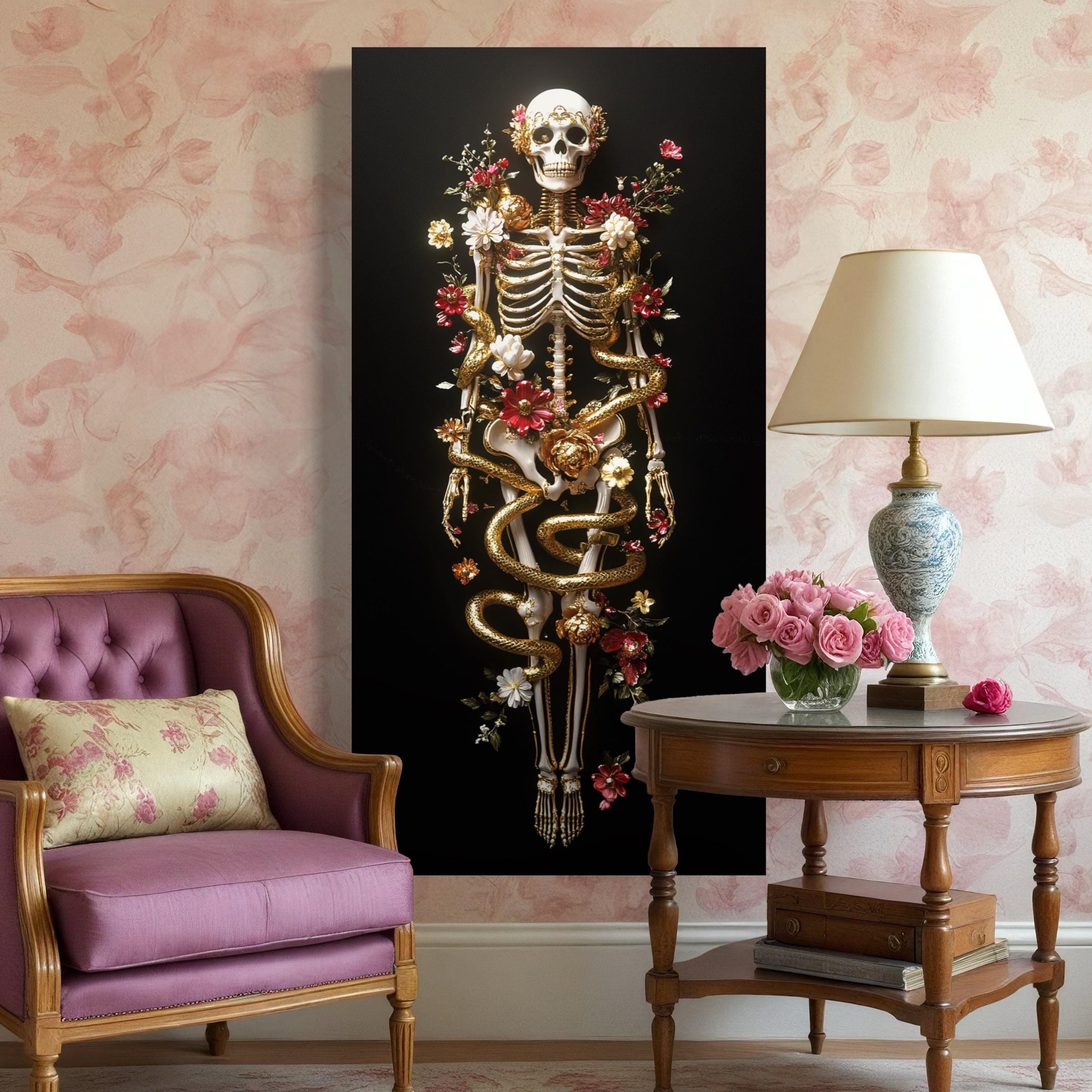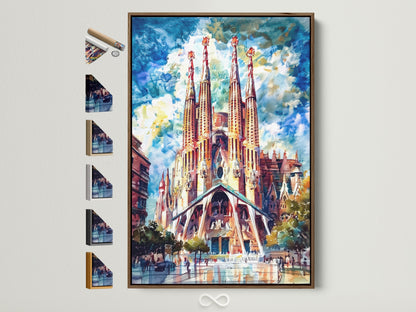Gothic at Home: The Neo‑Gothic & Dark Academia Playbook for Modern Interiors
Pointed arches, tracery shadows, jewel‑tone light—gothic interior design isn’t about gloom; it’s about drama with intention. This guide unpacks the historic Gothic Revival and its approachable cousin, Dark Academia, then translates both into a room‑by‑room plan you can implement today—no stained‑glass workshop required.
.jpg)
The DNA of Gothic Revival—And How to Use It at Home
Historically, Gothic architecture used pointed arches, ribbed structures and large openings to bring in more light; in the 18th–19th centuries it resurfaced as the Gothic Revival, championed by designers like A.W.N. Pugin. In rooms, that “vertical + luminous + patterned” equation becomes a few practical moves: emphasize height, repeat simple tracery‑like patterns, and layer warm, candle‑toned light so surfaces glow rather than glare. [oai_citation:28‡The Metropolitan Museum of Art](https://www.metmuseum.org/essays/gothic-art?utm_source=chatgpt.com)
Translate the big ideas: Arches become paint shapes or mirror profiles; tracery becomes screen patterns, rug geometry or cabinet doors; stained‑glass “glow” becomes layered lighting and jewel‑tone textiles.
Palette & Materials: Drama You Can Live With
Start with a moody triad—oxblood, midnight and forest—anchored by bone‑linen neutrals. Add ebonized oak, aged brass, and iron for weight. Stone (or porcelain) in encaustic patterns gives a subtle medieval cadence underfoot; a single velvet—cushions or a lounge chair—adds the plush counterpoint Gothic loves.
Want depth without heaviness? Use mineral paint or limewash. Their crystalline structure scatters light softly, producing that “lived‑in fresco” effect perfect for Gothic shadows. See our technical guide to mineral coatings. Limewash Walls & Mineral Paint

Lighting: Candlelight—Without Soot
Gothic light is less about lumens and more about gradation. Combine three layers: a warm ambient wash (think wall grazers or translucent shades), tight accent beams that rake across texture (linenfold, stone, limewash), and task pools at desks or beside armchairs. Keep color temperature consistent (2700–3000K) and dimmable.
.jpg)
Motifs Without Kitsch: Arches, Tracery & Linenfold
Use pointed arches where they’re clean and graphic—arched mirrors, cabinet fronts, painted door tops. Repeat one tracery‑like pattern (quatrefoil, trefoil, simple ogee) across two elements max: a rug + a side table base, or a screen + a bed’s headboard. For walls, faux‑linenfold in paint or shallow relief gives directional texture that drinks light. Keep the palette controlled so silhouette and shadow do the talking. Pugin’s rule of coherence—unified pattern language across details—still holds. [oai_citation:29‡victorianweb.org](https://victorianweb.org/art/design/pugin/healey10.html?utm_source=chatgpt.com)

Room‑by‑Room Playbook
Entry
- Quick win: Paint a shallow arch over the doorway (tone‑on‑tone). Add a narrow console with iron pulls.
- Weekend project: Swap flush mounts for a small lantern with warm glass; add an encaustic‑look runner.
- Investment: Custom steel or oak screen with simple tracery repeats, backlit softly for a stained‑glass hint at night.
Living Room
- Quick win: A pair of arched mirrors doubles height and bounces warm light. One velvet element (cushions or a lounge chair) grounds the mood.
- Weekend project: Paint a vertical panel (darker tone) behind the sofa to “stretch” the room—think of it as your modern rib vault. For a confident move, explore large wall geometry to organize space: Supergraphics at Home.
- Investment: Ebonized oak bookcase with simple quatrefoil cut‑outs or brass grills; add puck lights to wash the shelves.
Gothic Moodboard — 5 Art Picks
Library / Study (Dark Academia)
- Quick win: Paint bookcase interiors a deep oxblood or midnight. Add brass picture lights over shelves.
- Weekend project: Line a wall with framed architectural details—arches, plans, spires—to create a study wall with rhythm.
- Investment: Leather‑topped writing desk, library ladder or a pair of vintage brass sconces on a dimmer. See how a period room handled comfort + drama: the Met’s Gothic Revival Library. [oai_citation:30‡The Metropolitan Museum of Art](https://www.metmuseum.org/about-the-met/collection-areas/the-american-wing/period-rooms/gothic-revival-library?utm_source=chatgpt.com)
.jpg)
Kitchen & Dining
- Quick win: Ogee‑arched panel on a cabinet run (paint‑grade). Iron cup pulls + a brass pendant pair the “abbey + atelier” mix.
- Weekend project: Checker or encaustic‑look floor tile in low contrast; linen table runner, pewter or blackened flatware.
- Investment: Leaded‑glass style panels (clear textured glass) for upper doors; under‑shelf lighting for a stained‑glass glow effect.
Bedroom
- Quick win: Upholstered headboard with a soft pointed profile. One velvet throw, two brass pull‑chain lamps.
- Weekend project: Paint a tall “canopy” panel behind the headboard to suggest spire height. Choose a damask with matte sheen for textiles.
- Investment: Custom iron four‑poster with simple tracery at the crown. Keep bedding bone‑white to balance mood.
Bath
- Quick win: Black metal mirror with pointed arch; ribbed glass sconce pair.
- Weekend project: 10×10 matte tile set in a simple grid; paint ceiling a half‑tone darker to cozy height.
- Investment: Encaustic floor inset in a border; unlacquered brass faucet that patinates into the story.
Case Study: Two Ways to Be Gothic
**Strawberry Hill** shows a bright, playful, social version of Gothic—fan vaults translated into gilded ceilings, painted papers standing in for stone, and colored glass collaged into windows. It’s historically early, domestic, and surprisingly light. [oai_citation:31‡Strawberry Hill House & Garden](https://www.strawberryhillhouse.org.uk/the-house/history/?utm_source=chatgpt.com)
By contrast, **Pugin**’s interiors (e.g., the Palace of Westminster) argue for a “moral” unity of structure, ornament and craft—patterned floors, disciplined tracery, and metalwork designed to the same language as chairs, lamps, and textiles. Today, we take the best of both: Strawberry Hill’s brightness with Pugin’s coherence. [oai_citation:32‡RIBA](https://www.riba.org/explore/riba-collections/architectural-styles/gothic-revival-movement/?utm_source=chatgpt.com)
Styling Checklist: 24 Moves That Read Gothic (Not Costume)
- Paint a tonal pointed arch over a doorway or bed.
- One tracery repeat across two elements max.
- Swap cool white bulbs for 2700–3000K dimmables.
- Add ebonized wood—small table, frames, or shelf edges.
- Use bone/linen neutrals to balance oxblood/midnight/forest.
- Choose matte surfaces; let brass be the only “shine.”
- Layer a velvet (cushion or ottoman) against rougher textures.
- Leaded or ribbed glass for upper cabinets.
- Iron pulls and latches with simple cusp or ogee.
- Damask or tapestry pillow, not full‑room wallpaper.
- Carve shadow with picture lights on bookcases.
- Arched mirrors to double height and light.
- Checker or encaustic‑look tile in subtle values.
- Simple quatrefoil as a grill or side‑table base.
- Limewash primary walls; satin on trim only.
- Use a painted “canopy” to raise the bed’s presence.
- Mix pewter and brass for age and glow.
- Install a small lantern in the entry.
- Use screen shadows (laser‑cut tracery) as evening drama.
- Library ladders: even a half‑ladder adds story and verticality.
- Blackened picture frames with bone mats (cathedral print inside).
- Keep floors simple; let rugs carry pattern.
- Don’t over‑theme—one gargoyle is charming; five is a film set.
- Always edit by silhouette and shadow first; color second.
Dark Academia Finishes—Curated Art Picks
Shop the Look
Build a wall story with spires, arches and façades: explore Architecture & Urban Wall Art for cathedral silhouettes, blueprints and graphic façades sized for homes and studios.
Further Reading
- RIBA: Gothic Revival movement
- The Met Heilbrunn: European Revivalism
- The Met: Gothic Revival Library period room
- Historic England: What is Gothic architecture?
- Victorian Web: Pugin & the Gothic Revival
- Strawberry Hill House: History
- Smarthistory: Gothic architecture—an introduction
FAQ
What is the difference between Gothic Revival and Dark Academia?
Gothic Revival is a historical 18th–19th‑century style built from medieval sources (arches, tracery, craftsmanship), while Dark Academia is a contemporary mood—bookish, brass‑lit, and scholarly—that borrows Gothic elements (arches, velvet, iron) but stays flexible with modern furniture.
Can Gothic interiors work in small apartments?
Yes—use one dramatic shape (a painted arch or arched mirror), one deep color field, and layered warm lighting. Keep floors and large furniture quiet so the room reads tall, not heavy.
How do I get “stained‑glass light” without actual stained glass?
Backlight fretwork or textured glass, add jewel‑tone textiles that catch warm lamps, and use dimmers. The glow comes from contrast and layering, not literal panes.
Which patterns are most “Gothic” but still modern?
Simple ogees, trefoils and quatrefoils—used sparingly—feel architectural rather than costume. Repeat one pattern across two items (screen + table base) and stop.
Which finishes age well in a moody scheme?
Limewash or mineral paints, unlacquered brass, oiled oak, and matte tile. They patinate into the story and soften strong colors over time.
Related reads from our Design Dossier: Neo–De Stijl at Home, Soft Brutalism at Home, and Supergraphics at Home.





